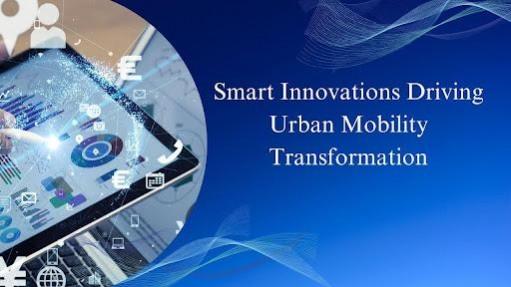Smart Innovations Driving Urban Mobility Transformation
3 min read
In this fast growing digital landscape, the transformative potential of Artificial Intelligence (AI) and cloud computing in transportation is driving significant advancements in urban mobility and sustainability. Venkata Krishna Reddy Kovvuri examines how these cutting-edge technologies are addressing critical challenges by reducing traffic congestion, lowering carbon emissions, and enhancing travel efficiency. This article highlights innovative applications like intelligent traffic management, predictive analytics, and dynamic route optimization. It provides a compelling overview of how AI and cloud solutions are reshaping urban landscapes, paving the way for smarter, greener, and more efficient cities.
AI-Powered Traffic Optimization
While AI and cloud technologies offer immense benefits, challenges such as scalability and data privacy continue to pose significant obstacles. Expanding these innovations from small-scale pilot programs to full-scale city-wide implementations requires robust infrastructure capable of handling vast data volumes and diverse operational demands. Additionally, secure data protocols must be prioritized to protect sensitive information and ensure public trust. Strategic investments in advanced infrastructure, stringent privacy frameworks, and collaborative policy-making will be crucial for enabling the widespread adoption and long-term success of these transformative technologies.
Predictive Maintenance for Infrastructure Longevity
Transportation systems are increasingly leveraging predictive maintenance to enhance infrastructure longevity and reduce operational downtime. By integrating advanced sensors with AI-driven predictive models, these systems monitor real-time data to anticipate maintenance needs accurately. This proactive approach allows for timely interventions, preventing major disruptions and costly repairs. Cities benefit from reduced maintenance expenses, while ensuring reliable and uninterrupted services for commuters. Administrators gain better control over resource allocation, creating more efficient, resilient, and commuter-friendly transportation networks that align with modern urban demands.
Cloud Computing: The Backbone of Smart Mobility
Cloud computing underpins the seamless integration of transportation systems, providing scalability and real-time data processing capabilities. The cloud’s ability to store and analyze vast amounts of data enables efficient resource allocation across urban networks. This technology facilitates rapid decision-making, optimizing transportation operations while maintaining cost-effectiveness.
Energy Efficiency Through Route Optimization
Real-time route optimization is another game-changing innovation. AI-driven systems analyze various factors, such as traffic density and weather conditions, to suggest the most energy-efficient routes. This reduces idle time and fuel consumption, contributing to lower carbon footprints and improved air quality in urban environments.
Collaborative Mobility for a Greener Future
AI solutions are fostering collaborative mobility through vehicle pooling and optimal capacity utilization. These strategies not only reduce the number of vehicles on the road but also integrate renewable energy sources into transportation networks. This dual approach supports a sustainable and efficient mobility framework.
Overcoming Scalability and Privacy Challenges
While the benefits of AI and cloud technologies are immense, challenges persist. Scalability and data privacy remain critical hurdles. Expanding these solutions from pilot programs to city-wide implementations demands robust infrastructure and secure data protocols. Investing in these areas will be pivotal for broader adoption.
Vision for Sustainable Urban Mobility
The future of urban transportation hinges on continued innovation and collaboration. As urban challenges grow, the integration of autonomous systems, blockchain technology, and enhanced AI algorithms will define the next wave of sustainable mobility. Policymakers and technology providers must work hand in hand to create regulatory frameworks that encourage adoption while addressing societal impacts.
As Venkata Krishna Reddy Kovvuri concludes, the integration of AI and cloud technologies marks a pivotal shift in transforming urban mobility. These advancements have already shown measurable impacts, such as reducing commute times and lowering emissions, highlighting their role in fostering sustainable urban environments. By prioritizing continued investment, strategic planning, and collaboration across industries, these technologies can reach their full potential. This proactive approach will lead to smarter, greener, and more efficient urban systems, setting a new standard for future cities worldwide.

